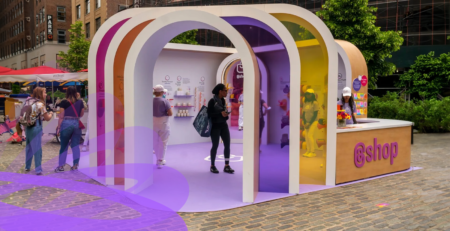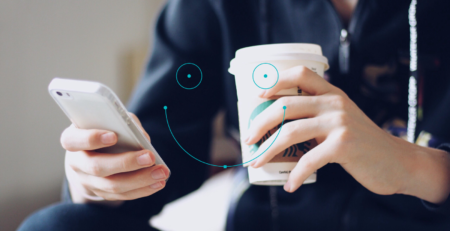Branding in the Age of AI: Using Technology to Enhance (Not Replace) Your Brand Story
Artificial intelligence is transforming nearly every facet of marketing today. In fact, over 60% of marketers have already used AI to automate parts of their job. Despite this rapid adoption, one thing remains constant: compelling storytelling is still the foundation of great branding. Many marketing leaders – from CMOs to CEOs – worry that AI’s rise means algorithms will overtake creativity. It’s a fair concern born from sci-fi imaginings of robots running creative departments. The reality, however, is far more exciting: AI is a powerful tool that can enhance human creativity, not replace it. Contrary to popular belief, AI isn’t here to steal the storyteller’s throne – it’s here to amplify our ability to tell great brand stories.
At Trace Brand Building, we’ve seen firsthand how AI-driven insights can merge with emotional storytelling to produce incredible results. As a Denver-based authority in branding, we understand how to harness cutting-edge AI without losing the human touch that makes a brand story resonate. In this article, we’ll share how AI offers opportunities to elevate your brand narrative – from hyper-personalized customer experiences to data-informed creative decisions – all while keeping your brand’s unique voice front and center. The goal is to show you how technology can enhance (not erase) the heart and soul of your brand story.
The Role of AI in Modern Branding
AI in today’s marketing world should be viewed as a tool, not a replacement for human creativity. When used wisely, AI can take on tedious and data-heavy tasks, freeing your creative teams to do what they do best – create. For example, machine learning algorithms can analyze vast amounts of customer data (web behavior, purchase history, social media engagement) to uncover patterns and insights that would be impossible to find manually. These insights help you understand your audience on a deeper level. Instead of guessing what your customers want, you have data-driven evidence – allowing you to craft branding strategies and campaigns with far greater precision.
Think of AI as an assistant that supercharges your branding efforts. Some common AI-driven tools making an impact in branding include:
- Audience Insight Platforms (Machine Learning): AI can crunch demographic and behavioral data to build highly accurate customer profiles and even predict customer preferences or churn risk. This means your brand messaging and products can be tailored to what your audience really wants, leading to higher engagement and conversion rates.
- Predictive Analytics for Marketing: Predictive models analyze trends and customer behaviors to help marketers make smarter decisions about everything from ad placements to product launches. For instance, AI can forecast which customer segments are likely to respond to a campaign, or even predict the return on ad spend for different channels. By anticipating consumer needs and actions, brands can be proactive rather than reactive in their marketing strategies.
- AR/VR in Brand Experiences: Augmented reality (AR) and virtual reality (VR) technologies, often powered by AI, are bringing brand stories to life in immersive ways. Brands are using AR to overlay digital content in real-world environments (think interactive product demos or virtual try-ons) and VR to transport users into completely virtual worlds. This isn’t just tech for tech’s sake – it creates deeper consumer connections through interactive storytelling and rich experiences.
In short, AI is augmenting the modern branding toolkit. It accelerates analysis and personalization, helping marketing teams make data-informed decisions in real time. Campaigns can be optimized on the fly: AI algorithms continuously test variations of ads or website content and shift budget to the best performers, taking a lot of the guesswork out of campaign optimization. The result is often more efficient ad spend and higher ROI – one study noted that machine learning can dynamically allocate marketing budget across channels where it’s most likely to yield the highest return, fine-tuning campaigns for maximum cost efficiency.
Crucially, all these AI capabilities are in service of creativity and strategy, not a substitute for them. A smart brand leader treats AI as a teammate for tasks like data analysis, trend prediction, and even generating first-draft content ideas. This allows your human team to focus on big-picture brand storytelling, emotional resonance, and the creative polish that only people can provide.
How AI Enhances Brand Storytelling
The best brand stories hit people on a personal level and make them feel something. AI’s real promise in branding is to help you deliver more of those meaningful, personal experiences – at scale. Here are three key ways AI can enhance your brand storytelling:
Hyper-Personalization: Storytelling for the Individual
In the age of AI, one-size-fits-all messaging is fading away. AI enables hyper-personalization, which means crafting narratives and experiences tailored to each individual customer. Machine learning models can segment your audience into ultra-fine micro-groups (or even segments of one) based on behavior, preferences, and past interactions. Using these insights, brands can serve dynamic content that feels as if it was written for just that one customer.
For example, an AI-driven email marketing system might assemble different product images, copy, and offers depending on a recipient’s browsing history and interests. A customer who has been looking at eco-friendly products will receive a brand story emphasizing sustainability, whereas a customer who values luxury and exclusivity sees a narrative highlighting craftsmanship and premium materials. This level of personalization significantly boosts engagement, with customers more likely to respond when the message speaks directly to them. In fact, AI is already making hyper-personalized brand narratives a reality – what used to be a marketer’s dream is now possible at scale.
The impact on storytelling is profound: AI gives you the ability to adjust the tone, imagery, or even the plot of your brand story to resonate with different audience segments without diluting your core message. When customers consistently encounter content that reflects their needs and values, they feel understood by the brand, which strengthens loyalty.
Predictive Analytics for Strategic Branding: Anticipating Needs
What if you could understand customer intent before they act? AI’s predictive analytics make this possible by identifying patterns in customer data and foreseeing future behavior. For brand storytelling, this means you can anticipate what topics, themes, or product features will resonate next – and shape your message accordingly.
For instance, predictive models might reveal that a certain segment of your users is likely to upgrade to a new product version in the next three months based on their usage patterns. Knowing this, your brand can begin telling the story that paves the way for that upgrade – perhaps by sharing content about how the new version saves time or solves a pain point these users have exhibited. By the time you officially pitch the upgrade, the narrative already feels relevant.
Predictive analytics also enhances the tactical execution of storytelling. AI can determine the optimal timing and channel for your message by analyzing when your audience is most likely to engage. If the data shows a particular customer tends to interact with your brand on Friday evenings via mobile, your campaign can be set to deliver a tailored story at that time and place. Brands using AI in this way are seeing tangible results: AI-driven predictive analytics enables more targeted and timely messages, resulting in higher conversion rates. Essentially, AI helps you be in the right place, at the right time, with the right story.
By understanding trends and customer intent early, you can also refine your overall brand strategy. Should you double down on a certain brand value? Is a particular product benefit becoming more important to customers? Predictive insight takes some of the guesswork out of these decisions. It’s like having a focus group of millions, continuously guiding you. The data might show, for example, an emerging interest in eco-conscious business practices in your industry – a savvy brand team would weave more sustainability themes into their story, backed by the confidence that it’s what the audience is looking for.
AR/VR for Immersive Brand Experiences: Bringing Stories to Life
Another exciting way AI enhances storytelling is by powering immersive experiences through augmented and virtual reality. AR and VR blur the line between the digital and physical worlds, allowing customers to step inside your brand story. When someone actively experiences your narrative – rather than just reading or watching – it creates a deeper emotional connection.
Augmented Reality can add interactive storytelling layers to real-world settings. Imagine pointing your smartphone at a product in a retail store and seeing the product’s “story” play out via AR – maybe a visualization of the craftsmen making it, or an animation of the positive impact using the product could have. Brands have used AR for interactive scavenger hunts, “try before you buy” previews, and more, all to engage customers in a fun narrative that ties back to the brand’s message. Virtual Reality goes a step further by transporting users to a fully virtual environment. A VR experience might let a customer walk through a virtual model of a new hotel your company is opening, complete with a guided narrative of the inspiration behind its design and the story of the local community it’s part of. This kind of immersive brand storytelling places the audience at the heart of the narrative, creating emotional connections and lasting impressions.
These technologies are no longer just novelties; they’re becoming standard tools for brands aiming to engage tech-savvy consumers. Importantly, AR and VR experiences are often fueled by AI in the background – AI helps by personalizing the experience (e.g., adapting a VR scene based on a user’s choices) and by making sense of visual inputs (e.g., computer vision in AR recognizing objects to overlay content). The result is a richer, more interactive story. Customers get to participate in the brand narrative, which can lead to stronger memory retention and affinity.
In summary, AI empowers brands to tell better stories by making them more personal, predictive, and immersive. Whether it’s tailoring a message to a single person’s tastes, staying one step ahead of consumer trends, or letting users live a story through VR – these enhancements deepen the impact of your brand narrative.
Solving Key Branding Pain Points with AI
Beyond enabling new storytelling tactics, AI is also a problem-solver for common branding and marketing pain points. As brand stewards, marketing directors and CMOs often grapple with questions like: Are we wasting part of our ad budget? Is our message really resonating? How do we stay authentic as we scale? AI tools, when applied thoughtfully, can help tackle these challenges:
Inefficient Ad Spend
One major pain point is pouring money into marketing campaigns without clear returns. Traditional ad spending involves a lot of trial-and-error – you invest in a mix of channels and creatives and hope something sticks. AI takes the guesswork out of this process. By analyzing campaign performance data in real-time, AI algorithms can automatically dial budgets up or down for different channels and audience segments to maximize ROI. There’s evidence that this approach works: algorithms can allocate resources where they’re likely to yield the highest return by learning from historical data and current performance, ensuring marketing budgets drive real ROI.
For example, if AI observes that your paid social ads are generating far better conversion rates among a certain demographic late at night, it might increase bids for that group during those hours and reduce spend on less effective segments. Or, if a certain creative isn’t pulling engagement, AI can pause it and redistribute budget to a better-performing ad. This continuous optimization means fewer dollars wasted on underperforming tactics. Brands leveraging AI in ad platforms (like Google and Facebook’s AI-driven ad delivery) often see more efficiency than manual campaign management, especially as campaigns scale.
The result is not just cost savings, but also learning – AI provides insights on what messaging, creative, and channels work best for each slice of your audience. Your team can use these insights to refine the broader brand strategy, focusing resources on the narratives and platforms that truly hit the mark.
Misaligned Messaging
Another common challenge is knowing whether your brand message actually resonates with your target audience. Sometimes campaigns flop not because the product is wrong, but because the messaging missed the mark – maybe it was talking past what the customer cared about. AI can help prevent that by analyzing audience behavior and feedback at a scale and speed humans can’t match.
Through techniques like natural language processing (NLP), AI systems can sift through mountains of social media comments, reviews, and customer service transcripts to gauge sentiment and identify recurring themes. This kind of analysis might reveal, for instance, that customers keep mentioning a need for “reliability” that your current messaging isn’t addressing. With that insight, you can adjust your story to focus more on how reliable your brand or product is. AI essentially acts as an always-on listener, making sense of the noise to find what truly matters to your audience.
AI can also assist in content creation and refinement. Tools powered by GPT-like models can draft versions of ads, emails, or landing page copy optimized for different segments. Your team of human writers and strategists then tweaks these drafts to ensure they’re on-brand and emotionally engaging. This speeds up the creative process while keeping messaging aligned with data-driven insights. As an example, AI-based writing assistants might analyze which phrases or tones get better responses from different demographics, and suggest adjustments accordingly. One marketing study noted that AI can even help identify which aspects of a brand’s story resonate most with audiences by analyzing engagement data. With that knowledge, you can double down on the themes that work and drop the ones that don’t, continually refining your messaging for alignment.
The bottom line is that AI gives you a kind of radar for audience connection. Instead of flying blind or relying solely on post-campaign surveys, you get instant feedback loops. Your brand message evolves in real-time, guided by actual audience reactions, which greatly increases the chance that your campaigns will strike the right chord.
Brand Authenticity Concerns
Brands often worry that leaning too much on technology might make them seem robotic or inauthentic. Authenticity is the currency of modern branding – customers (especially younger generations) gravitate to brands that feel genuine and human. So how can you use AI and still keep your brand’s soul intact? The key is using AI to stay relevant while preserving your unique identity.
AI can actually help maintain authenticity if used to reinforce (not reinvent) your brand’s core values. For example, AI tools might analyze millions of consumer interactions and find that your brand’s message of “community” is what people most connect with. Knowing this, you ensure all your AI-generated content and campaigns emphasize community, keeping the brand voice consistent. As noted earlier, AI can pinpoint what resonates with your audience – in many cases, that aligns with the most authentic parts of your story. By doubling down on those aspects, you both use data and stay true to your identity.
AI can adapt your brand storytelling to different cultures and contexts while preserving your voice. This is huge for brands that operate in diverse markets. An AI language tool can translate and tweak your content for various regions, using sentiment analysis and language processing to hit the right local tone, but it will keep the core brand voice consistent. In other words, AI can help you speak many languages or appeal to different subcultures, all without losing the authentic voice that defines you. Your brand comes across as culturally aware and relevant, yet still unmistakably “you.”
Of course, staying authentic with AI isn’t automatic – it requires oversight. We recommend always having brand guardians (your marketing team, copywriters, etc.) review AI-generated outputs. The human touch ensures that nuances, humor, and heart remain in the narrative. But with the right checks and balances, AI is a powerful ally to keep your brand story both fresh and authentic. It can even spot-check for authenticity by flagging content that doesn’t sound like your established tone. Think of it as a safety net: AI can alert you if that blog draft is veering off-brand or becoming too generic, so you can course-correct before it goes out.
In summary, AI can solve key branding pain points by optimizing spend, sharpening your message, and aiding in authenticity. It gives you the data and tools to be efficient and relevant – but it’s most effective when guided by a clear brand purpose and human creativity.
Why AI Needs a Human Touch: Balancing Technology with Creativity
With all these AI capabilities, it’s important to emphasize one thing: AI works best in branding when balanced with human creativity and oversight. Technology can crunch numbers and even generate content, but humans bring irreplaceable elements to the table – emotional intelligence, cultural context, spontaneity, and creative vision. The brands winning in the AI era are those that blend the efficiency of AI with the ingenuity of people.
AI can churn out a hundred social media captions in a blink, but only a human can infuse the subtle humor or empathy that turns a bland post into a memorable one. As one expert aptly put it, no AI system can fully comprehend your brand’s intricacies and rich heritage as a human can – the unique nuances and emotional connections that humans contribute are invaluable (Your Brand AI: Balancing Authenticity & Automation | InspiringApps). In practical terms, this means your team’s role is more important than ever. Let AI handle the heavy lifting on data analysis, A/B testing, and even first drafts. Then let your creatives and strategists refine the narrative to ensure it strikes an emotional chord and aligns with brand values. This human-plus-AI workflow can dramatically increase efficiency without sacrificing quality or authenticity.
Case studies of brands finding this balance are emerging across industries. Take Starbucks, for example. The coffee giant uses an AI platform called Deep Brew to personalize rewards and offers for customers. Deep Brew analyzes purchasing data to suggest the right reward at the right time for each loyalty member, which has boosted engagement in their rewards program (Starbucks Uses AI-Powered Personalized Rewards to Boost Frequency and Spend | PYMNTS.com). But Starbucks doesn’t let the AI just run wild – their marketing team guides the tone and spirit of these offers to make sure they still feel warm, friendly, and Starbucks-y (that personal, neighborhood coffee shop vibe the brand is known for). The AI provides insights and automation, but humans ensure the brand’s voice isn’t lost in the process.
Another example is Coca-Cola’s recent “Create Real Magic” campaign, which invited consumers to use AI image generators to create artwork with iconic Coca-Cola imagery. Coca-Cola leveraged cutting-edge AI tech in a fun, engaging way that let fans take part in the brand’s creative story. Importantly, the campaign was framed and guided by Coca-Cola’s human marketers to fit the brand’s playful, inclusive identity. “Our company is embracing the power of digital in every aspect of our business, and ‘Create Real Magic’ is a way to invite even more people to join us,” said Coca-Cola’s global CMO during the launch (How Coca-Cola Used AI to Launch an Interactive Marketing Campaign | Anchor). The result was a blend of AI-driven personalization (everyone’s artwork was unique) with a very human-centric goal: making consumers feel like co-creators of the brand’s story. The brand’s core message of happiness and creativity remained front and center, proving that AI can enhance engagement without watering down brand voice.
What these examples show is that AI works best as a creative collaborator, not an autonomous creator. Brands still need people to set the vision, define the tone, and ultimately decide what stories to tell. AI can suggest optimal ways to tell those stories and handle the rapid execution. In many ways, AI gives marketers superpowers – the ability to analyze in seconds what would take days, or to generate variations of a concept that spark new ideas. But it’s the marketers, the creative directors, the brand strategists who decide which of those ideas actually connect on a human level.
In practice, balancing AI and creativity might look like this: your team uses AI to generate ten tagline options for a new campaign, based on past high-performing language. The team then evaluates those suggestions, picks one or two that have potential, and refines the wording to be more provocative or inspiring. The final tagline is something neither the AI nor the human might have come up with alone – it’s stronger because it was a collaboration.
As a rule of thumb, we encourage brands to let AI augment your creative process, but never fully automate it. Keep humans in the loop to supervise AI outputs (preventing gaffes or tone-deaf messages) and to add the emotional storytelling elements that machines currently can’t replicate. By doing so, you truly get the best of both worlds: efficiency and scale from technology, combined with the heart and imagination of human creativity. Brands that strike this balance are not only more productive; they also tend to produce marketing that feels innovative yet genuine.
How Trace Brand Building Helps You Leverage AI for Better Branding
Navigating the intersection of AI and branding can be daunting. That’s where a partner like Trace Brand Building comes in. We specialize in combining AI-powered insights with creative storytelling to elevate your brand. Our approach is never “AI instead of humans” – it’s a harmonious blend where data informs creativity and creativity guides the use of data.
Our expertise lies in understanding both the art and science of branding. On the technology side, our team stays on the cutting edge of AI tools that matter to marketers. Whether it’s analytics platforms that reveal hidden audience insights, or content generation tools that can speed up campaign execution, we know how to deploy these technologies effectively. But we don’t stop there. We also have seasoned brand strategists and storytellers who ensure that all these insights translate into a compelling narrative. It’s this dual proficiency – in AI and in branding craft – that positions Trace Brand Building as an authority in the field. We speak the language of data and the language of emotion, bridging the two in a way that makes your brand stronger.
When you partner with us, here’s what you can expect:
- Data-Driven Brand Strategy: We use AI to gather and analyze data about your market, customers, and even your competitors. From this, we distill key insights – for example, identifying an untapped customer segment that shows high engagement with similar brands, or discovering which brand values your customers care about most based on social media sentiment. We then help you shape a brand strategy that leverages these insights, ensuring your positioning and messaging hit the bullseye.
- AI-Enhanced Creative Process: Our creative team works hand-in-hand with AI tools to generate ideas, content, and campaign optimizations. Perhaps you need a series of blog posts to establish thought leadership. Our process might involve using an AI tool to suggest topics and draft outlines based on trending industry questions, which our writers then craft into polished, human-toned articles. This speeds up production while maintaining your brand’s voice. Every piece of content still goes through rigorous human editing – we make sure it’s not just on-brand, but also high-quality and engaging. The result is a higher volume of excellent content without extra strain on your team.
- Personalized Customer Experiences: Trace Brand Building can implement AI-driven personalization in your customer touchpoints, from your website to email campaigns. We’ll help you set up the algorithms that serve each customer the most relevant content or product recommendations. More importantly, we map these personalized tactics back to your brand story. If your brand is all about innovation, for instance, we ensure the personalized content each user sees reinforces that theme (like showing them your latest innovation that aligns with their interests). By doing so, personalization isn’t just a gimmick – it becomes a way to consistently tell your brand story in a way each customer will appreciate.
- Optimized Marketing Spend: Concerned about marketing ROI? Our analysts use AI tools to continuously monitor your campaigns and find opportunities to improve. We can set up dashboards that use predictive analytics to forecast which marketing activities will yield the best returns, so we can adjust your marketing mix proactively. Clients who have worked with us have seen improvements like lower cost-per-acquisition and higher customer lifetime value after we fine-tuned their campaigns with AI insights. We take pride in treating your budget as if it were our own, using AI to squeeze the most value from every dollar.
- Maintaining Brand Authenticity: As branding experts, we’re vigilant that your brand’s core identity never gets lost. We establish clear brand guidelines (voice, tone, visuals, values) and ensure any AI-generated content or automated decision aligns with them. If the AI suggests something that doesn’t feel authentic to your brand, we override it – simple as that. Our job is to keep the technology in check and aligned with your brand’s human element. Over time, we even train AI systems with your brand’s own data and preferred style, so its suggestions get more and more on-point. It’s like training an assistant in how your brand speaks and behaves.
Why partner with Trace Brand Building? Aside from our expertise, we have a proven track record of elevating brands using AI-enhanced strategies. We’ve helped clients revitalize stale brand images by uncovering new insights about their audiences. We’ve launched campaigns that achieved double-digit engagement lifts because AI guided us to more resonant messaging. And we do all this while keeping the process collaborative and transparent – you’ll always know what we’re doing and why. Our team is passionate about branding and bullish on the power of AI, but we always put your brand’s unique story first. We operate as an extension of your team, ensuring that technological tools serve your goals and not the other way around.
In essence, Trace Brand Building offers the best of both worlds: the latest AI capabilities with good old-fashioned branding savvy. We help you work smarter, creating branding and marketing that’s innovative, efficient, and deeply connected to your customers. When you work with us, you’re not just adopting AI for the sake of it; you’re leveraging it in a strategic way that will make your brand more engaging and competitive in a crowded market.
Final Thoughts
AI is here to stay, and its role in marketing will only continue to grow. Forward-thinking brands and around the world are already experimenting with AI to tell their stories in more dynamic ways. Those that embrace AI with a human-first approach will have a clear advantage. They’ll be able to form deeper customer relationships through personalized, predictive, and immersive storytelling – all while operating more efficiently. On the other hand, brands that ignore these tools risk falling behind with campaigns that feel generic or out-of-touch in a data-driven age.
The key takeaway is this: AI should enhance your brand story, not replace it. By using technology as an amplifier of your creativity and vision, you can unlock opportunities that simply weren’t possible a few years ago. Imagine understanding your customer’s needs so well that your brand feels like a friend. Or having the ability to try out bold ideas and get instant feedback on how they resonate. This is what AI makes possible. But success will come to those who balance innovation with authenticity – leveraging algorithms while staying true to the heart and soul of their brand.
If you’re a marketing director, CMO, or CEO looking to strengthen your brand in the age of AI, now is the time to act. Don’t let fears of automation hold you back from exploring tools that can sharpen your competitive edge. Instead, take a proactive step toward integrating AI into your branding strategy in a thoughtful way. Trace Brand Building is here to help. With our guidance, you can navigate this new landscape confidently and strategically.
Ready to enhance your brand story with the power of AI? Contact Trace Brand Building today. Let’s work together to write the next chapter of your brand’s story – one where technology and humanity together create marketing magic that drives engagement, optimizes your spend, and builds lasting customer relationships. Your brand’s future is bright, and we’re excited to help you shine in this new era of branding in the age of AI.












Leave a Reply